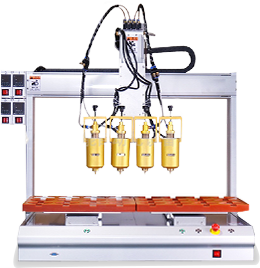

The circular medical equipment parts made of black plastic or metal are made of high-quality materials such as medical-grade POM plastic and 316L stainless steel. The surface of the parts is specially treated to appear black, which combines aesthetics with protective functions. The circular design, combined with structures such as annular protrusions and central circular holes, can achieve sealed connections, precise positioning or power transmission between parts. It is widely used in medical testing equipment, imaging instruments and surgical instruments, providing reliable support for the stable operation of medical equipment.
Multifunctional application features: The annular protrusion and groove design can realize quick snap-on connection and sealing between components to prevent liquid leakage and dust intrusion; the center circular hole can be used as an installation position or fluid channel for shaft parts to meet the diverse functional requirements of medical equipment transmission and circulation.
Testing items | Testing standards | Significance of testing |
Material safety | Complies with ISO 10993 biosafety standards | Ensure safety of contact with human body |
Dimensional accuracy | ±0.05mm | Ensure assembly accuracy |
Corrosion resistance | Passed 96-hour salt spray test (metal) | Adapt to complex medical environment |
Surface antibacterial properties | Antibacterial rate ≥99% (plastic) | Reduce infection risk |
3. Product Details
Material and process: Plastic parts are made of medical-grade POM or ABS raw materials, and are molded by high-precision injection molding with a mold precision of micron level to ensure the stability of product dimensions; after molding, the surface is treated with antibacterial treatment to improve hygiene performance. Metal parts are made of 316L stainless steel, which is blackened after forging and CNC processing to increase surface hardness and rust resistance. Some parts can also be electropolished to make the surface roughness Ra≤0.4μm.
Specifications and customization: A variety of standard specifications are provided, with a diameter range of 10mm - 100mm and a thickness of 2mm - 15mm. Customized services are supported, and materials, sizes, surface treatment methods can be adjusted according to customer needs, as well as special structural designs (such as adding positioning pin holes and threaded holes) to meet the personalized needs of different medical devices.
Application scenarios: In medical testing equipment, it is used as the core component of sample trays and reagent turntables to achieve accurate transmission of samples and reagents; in medical imaging equipment, it is used to fix lenses and detectors to ensure the coaxiality and stability of optical components; in surgical instruments, it is used as joint connectors and knobs to help doctors perform delicate operations. In addition, it can also be used in the outer shell sealing cover of medical equipment to prevent dust and liquid from invading the interior of the equipment.
 Headquarters tel.
Headquarters tel. E-mail.
E-mail.